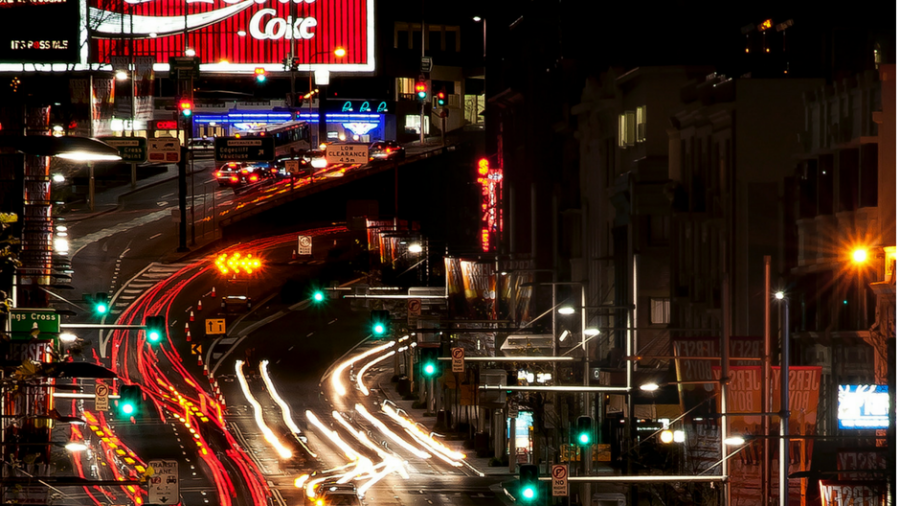Australian drivers are distracted while driving for nearly half the time, in fact, roughly every minute and a half. Only 5% of us do nothing except concentrate on the road ahead. While researchers are shocked by these results, there is a paradox going on here. Road safety authorities are worried about distraction, but governments and businesses are finding more ways to distract us.
Australian naturalistic driving research
Monash University’s Accident Research Centre is carrying out naturalistic in-car research in NSW and Victoria. Researchers want to know where drivers are looking, speed and position of vehicle and behaviour of other drivers, motorcyclists, cyclists and pedestrians. They found:
- Reaching down for an object, including mobile phones, made up only 8% of distractions but increases crash risk by nine times
- Texting on handheld phones, only 3.5% of distractions, increases crash risk by six times because it takes 94 seconds each time.
People do all kinds of things in their vehicles, including personal hygiene tasks, singing, writing in diaries and eating lunch. Transport NSW says if you take your eyes off the road for more than 2 seconds, your crash risks doubles. Travelling at only 50kph, that is 30m not looking at the road.
This kind of research is valuable for showing how drivers are distracted while driving. But it could say more about what is going on around them. Humans are designed to constantly look around to check for new information. Today, what they commonly see is a lot of “visual clutter”.
What about billboards?
Visual clutter is everything you see that you don’t necessarily need to see but it takes your attention. Clutter is increasing: heavy traffic, complicated ways of managing traffic, extended roadworks, roadside construction and more sophisticated digital billboards on major roads.
Billboards are designed to draw your eyes away from the road. In fact, the much touted industry average is 6 seconds of your time. This is three times longer than the 2 second safe time. Even if you read only 6 words, you have taken your eyes off the road for 2 seconds.
Responding to an AustRoads study on billboard distraction, Outdoor Media Association claimed billboards are just a “glance medium”. It said the average glance at regular billboards is 0.73 seconds, and at digital billboards is 0.92 seconds. So much for the 6 seconds industry average.
Meanwhile, the future of billboards does not sound very friendly to road safety. So-called smart billboards will be able to read the make, model and year of your car so they can serve you instantly targeted ads. (Google Streetview found the type of car you own is a good proxy for occupation, education, income).
Straight after the ad, your mobile will light up with a reinforcing message from that ad. Will you be distracted while driving?
Contradictory expectations of drivers
There seem to be a few contradictory, maybe unrealistic expectations of drivers:
- Concentrate on driving
- Read and digest road signs and large, bold digital billboards
- Use in-car technologies, such as GPS and mobile phones
- Use mobile phone apps for everything you ever need to do
- Don’t use mobile phones while driving.
Even the first expectation, concentrate, is problematic. Once you learn how to do something, you don’t need to fully concentrate on doing it. In the Hierarchy of Competence, you go from:
- Unconscious incompetence (don’t know what we don’t know)
- Conscious incompetence (aware we need to know more)
- Conscious competence (need to concentrate to do it)
- Unconscious competence (can do it without thinking).
Experienced drivers can drive without thinking. In line with unconscious competence, they should be able to drive while doing something else. Surely they should be able to handle some distractions.
All on your phone
Second, we encourage drivers to take their visual attention away from the road while making it harder for them to stay focused on driving. For example, new cars have far more complex dashboards and it can take time to do even the simplest thing like change radio stations. Speed limits are often mind-numbingly low. Trucks and road signs at night are distractingly lit up like Christmas trees.
Third, everything you need to do in a day is increasingly available on your mobile phone. There’s an app for everything, whether it’s fuel payment apps or green slip price checks. The government wants all its services to be instantly available on the phone. So it’s contradictory to make a mobile phone so indispensable and then say you can’t use it.
Of course, there are other distractions. We are social animals, so even the behaviour of other drivers turns our heads. Never mind, of course, the distraction of what’s actually going on in our own heads.


your opinion matters: